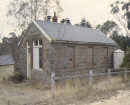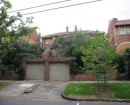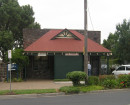FORMER AVON BUTTER FACTORY
218-222 NICHOLSON STREET FITZROY, YARRA CITY
-
Add to tour
You must log in to do that.
-
Share
-
Shortlist place
You must log in to do that.
- Download report
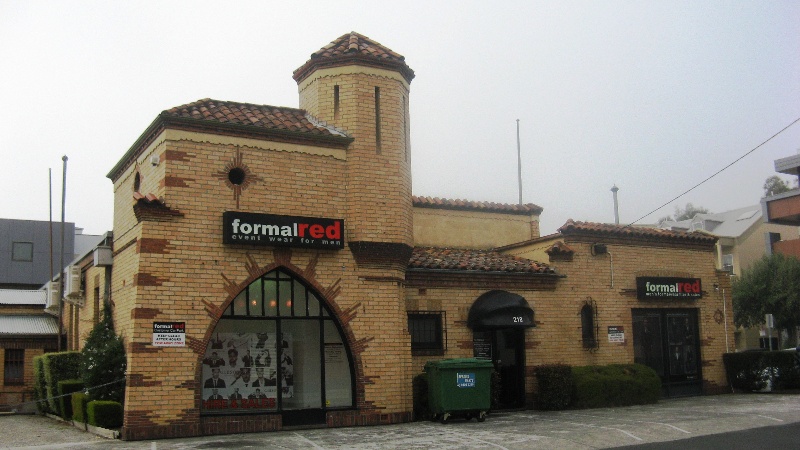

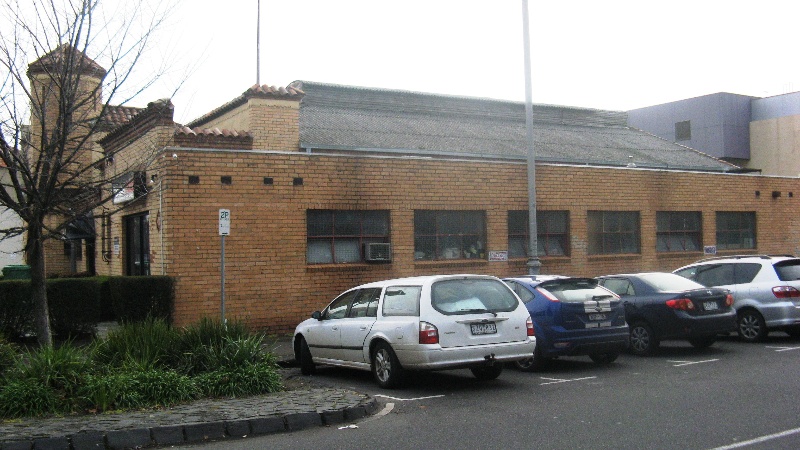
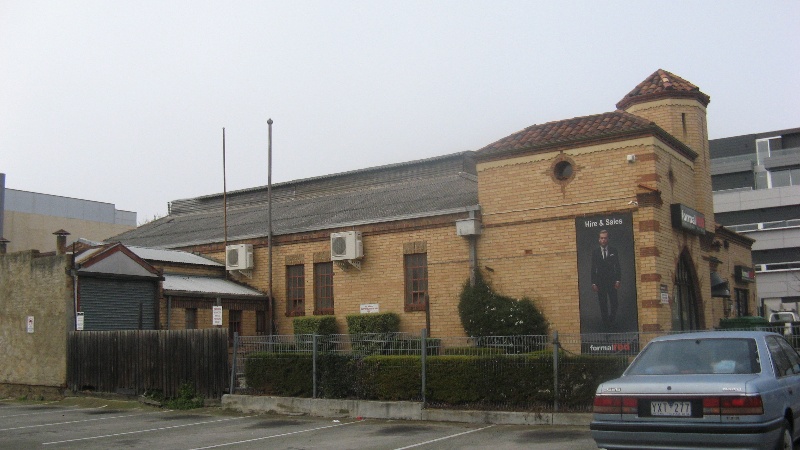
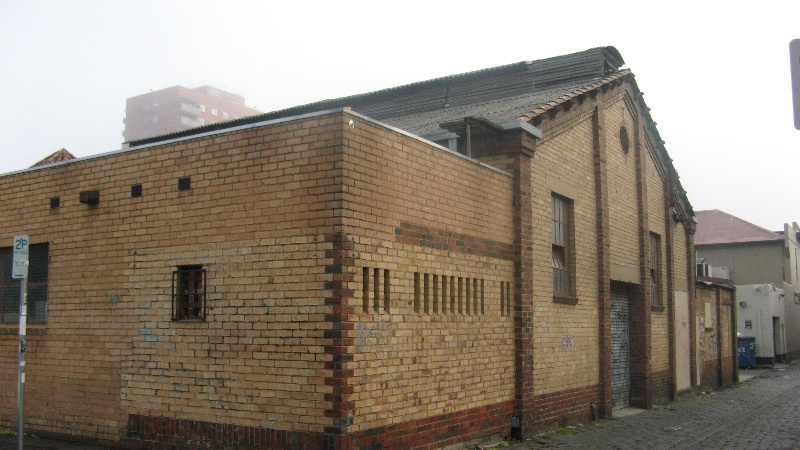
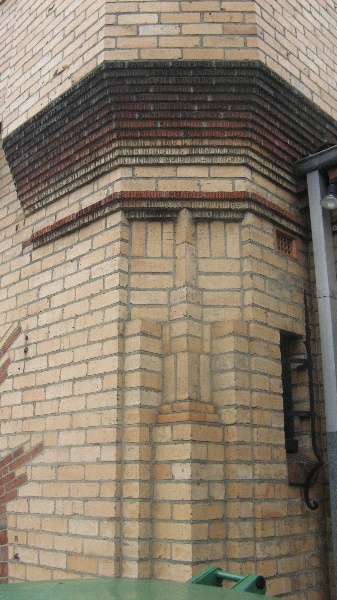
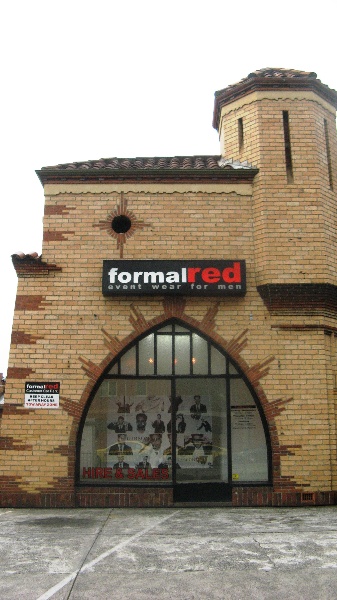

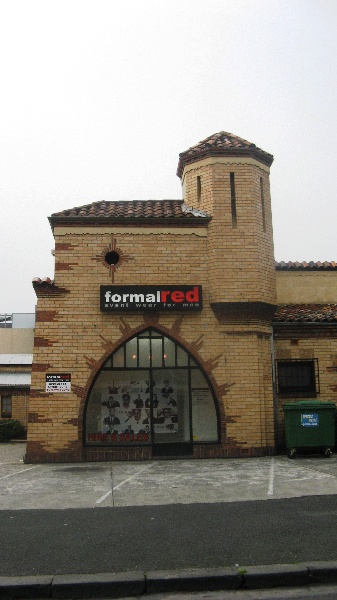
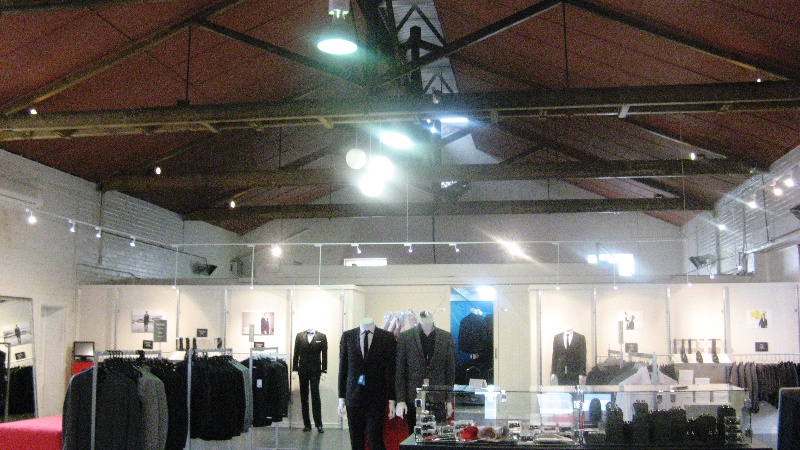
Statement of Significance
What is significant?
The former Avon Butter Factory is a small industrial and commercial building which included a factory, offices and a retail outlet for the factory's products. It was designed by the architect I G Anderson for Fitzpatrick Bros Pty Ltd, was built by George Collings Pty Ltd and completed in 1932.
The Fitzpatrick brothers had owned other butter factories, including one in Lancefield, and it was noted in contemporary articles that this modern factory had become necessary owing to the expansion of their business. The building was said to depart radically from conventional designs of factory buildings and was designed to attract attention. It was described then as 'Victoria's most picturesque butter factory'. It was also noted that cream for the factory's operations was received from dairymen as far afield as South Australia and New South Wales. The prominent architect I G Anderson (1890-1963) began practising in Geelong and moved to Melbourne in 1930 after obtaining the commission to design the Brunswick Market (VHR H1307). He designed buildings throughout Victoria, including markets, apartments, commercial buildings, factories, cinemas, municipal buildings, golf clubs and houses. He designed in a range of styles but embraced the Moderne style in the mid-1930s and became one of its leading exponents. By 1940 the building was owned by Metropolitan Dairy Farmers Ltd, which was licensed to deliver milk from the premises. It has since then been used for various purposes including a knife factory.
The former Avon Butter Factory is a single-storey asymmetrically composed brick building in an Inter-war Spanish Mission style, with medieval features such as a corbelled tower and a Gothic arched doorway to the former shop. It is notable for the quality and richness of the brickwork, with walls of cream brick with jade green mortar (now faded), decorated with 'sunburst' edging and star patterns of red brick, and with a stepped roof of Cordova tiles. The former factory area at the rear has a roof of corrugated asbestos sheeting and a long ridge ventilator. The interior partitioning and original floor have now been removed. Minor changes have been made to the exterior, including the removal of the brick front fence and the front garden, changes to the former vehicle entrance and the enclosing of the former driveway on the south side.
This site is part of the traditional land of the Kulin Nation.
How is it significant?
The former Avon Butter Factory is of architectural and historical significance to the state of Victoria.
Why is it significant?
The former Avon Butter Factory is architecturally significant as an impressive example of the Inter-war Spanish Mission style, most often used on buildings with a strong public profile. It is a rare example of the application of this style to an industrial building, which would normally have had little architectural pretension, in order to attract attention and promote sales in this prominent inner city location. It is significant for its unusual composition and for its decorative and colourful brickwork, which is not rendered, unusual for the Spanish Mission style. It is an outstanding example of the work of the architect I G Anderson, who was responsible for the design of a number of important buildings, mostly in Melbourne or Geelong, in the inter-war period.
The former Avon Butter Factory is historically significant as a demonstration of the mixed residential and industrial nature of the inner suburbs until recent times, which meant that workers could live close to their place of employment. It is significant as a reflection of the changes which occurred in the dairy industry, one of Victoria's most important industries, by the inter-war period. Dairy factories in the late nineteenth and early twentieth centuries were located in rural areas, but by the inter-war period the development of rail and motor transportation made it possible for butter factories to be located far from the sources of cream supply and closer to their markets.
-
-
FORMER AVON BUTTER FACTORY - History
CONTEXTUAL HISTORY
Dairying and milk supply in Melbourne
Dairying has been one of Victoria's most successful industries, particularly after the introduction of refrigeration in the 1880s made export possible. In the early days of the colony many households kept a house cow and produced their own milk, cream, butter and cheese. By the 1880s as the city expanded and agricultural land was subsumed this diminished, and fresh milk began to be brought in from dairy farms in the Dandenongs, while farmers to the west of the city in areas such as Werribee focused on butter production. The area from which supplies could be sources expanded as the rail system grew and methods of keeping butter and cheese fresh were developed.
Butter factories
Butter making was transformed in the 1890s from a cottage industry of dubious quality to a highly productive, standardised and mechanised industry. This was made possible by the development of the mechanical cream separator, which made it possible for farmers to separate milk on the farm and send their cream away every two or three days instead of daily, and by commercial refrigeration which allowed butter to be stored and exported to Europe. Government bonuses introduced in 1889 encouraged the development of factories producing butter for export, and by 1894 Victoria exported half the butter it produced and butter was Victoria's third most important export. By 1905 nearly two hundred butter factories operated around Victoria, mainly in Gippsland, Goulburn Valley, central, north-east and south-west Victoria. Often painted and appetising creamy yellow, butter factories became local landmarks and a source of community pride.
Where cows in outer suburbs had once supplied the metropolis, by 1920 most milk came from dairies 60 km or more distant. Country stations forwarded milk to the metropolitan area along the Gippsland, South Gippsland, Mornington, Western District, Bacchus Marsh, Whittlesea, Healesville, Main and North Eastern lines. From 68 forwarding stations within an 80-km radius, milk being transported to the metropolis could be in transit for over two and a half hours. In the metropolitan area, 87 700 quarts were received daily by rail at stations including Flinders Street (2400), Caulfield (1000), Toorak (1360), Spencer Street (6000), Camberwell (4000) and Richmond (3000). Suggested measures to improve supply included the separation of milk from general merchandise, transport from country to metropolitan stations in proper ice-louvred trucks, and proper provision for the reception of milk at receiving stations. The city's total daily consumption of 120 759 quarts also comprised milk delivered by road (20 320) and produced locally (12 739). Within the metropolitan area itself there were 759 milk shops, and 823 carts employed at 401 dairies in suburbs such as Essendon (38), Brunswick (35), Prahran (29), Fitzroy (27), Collingwood (26), Richmond (23), Hawthorn (21), South Melbourne (21), and Caulfield (20). (eMelbourne at http://www.emelbourne.net.au/biogs/EM00436b.htm)
During the 1920s and 1930s motor transport allowed butter factories to collect milk from a wider area. By the late 1960s most local butter factories had either been closed or taken over by large dairy conglomerates.
The architect: Illiffe Gordon (I G) Anderson (1890-1963)
[Information from nomination report for another Anderson building, the now demolished Lonsdale House in Lonsdale Street.]
I G Anderson was born in South Yarra in 1890 and moved to Geelong in 1910. He studied architecture at the Gordon Institute of Technology and later at the Atelier at the University of Melbourne. After winning an architectural competition for the design of the Mildura Club at Mildura in 1919 Anderson began practising in Geelong. His works there included the O'Connell Block (1923-5), Belcher's Building (1926), the former CML Building (1926), the Tait Block Building (1925-7), the Retail Market (1926) and the Corio Theatre (1926). He adopted the ideas of the Garden City Movement and designed an estate in the Geelong suburb of Corio, later renamed the Grandjean Park Estate. A major commission was the Geelong West City Hall in Pakington Street (competed 1924), a two storey building in the English Renaissance Revival style.
Anderson moved to Melbourne in 1930 after receiving a commission to design the Brunswick Market (VHR H1307). This Spanish Colonial style building was the first of a number of market buildings designed by Anderson, including one in Smith Street, Fitzroy, next to Foy & Gibson's, and one in Wilson Street, Horsham. His work also included apartment blocks, factories, cinemas, houses and maisonettes, municipal buildings, cafes and golf clubs.
He is best known for his domestic commissions, particularly apartment blocks, which include the Garden Avenue precinct at East Melbourne (1938-41), Ostend at Brighton (1934), Dorijo at East Melbourne (1934) and Avenue Court at Albert Park (1934). He also designed Lonsdale House in Lonsdale Street (1934, demolished).
His designs in Melbourne ranged from Spanish Medieval, to Art Deco to Streamlined Moderne. Like many other inter-war architects his style changed dramatically as he embraced the Moderne style in the mid-1930s, and he became one of its leading exponents. At a time of economic hardship he was regarded as one of the new breed of architects able to reduce building costs by adapting functionalist architecture. However his grandson recalls that he gained much-needed revenue by undertaking small jobs, such as the remodelling of market stalls at the Prahran, St Kilda and Queen Victoria Markets.
Anderson also designed a number of buildings in Tasmania in the inter-war period. During WWII he was employed as the Chief Architect for the US Army in Victoria, during which time he was responsible for the remodelling of the Skipping Girl Factory in Richmond for use by a group connected to General Douglas MacArthur. In 1947 he left Melbourne to work in Tasmania, establishing a practise in Hobart in partnership with his son Leslie. The firm was prolific, and Tasmanian commissions included motels, hotels, houses, halls, a railway station, a swimming pool, government offices, and the magnet Court Shopping Centre in Sandy Bay; many of these have since been demolished.
Anderson's other great passion was painting, and in 1937 he was awarded a Fellowship of the British Royal Society of Arts, held a number of exhibitions in the 1940s and 1950s and designed the Coat of Arms for the City of Hobart.
He died in Hobart in 1963. A second son, John, who had also joined the firm, closed the practice in the late 1960s.
HISTORY OF PLACE
The former Avon Butter Factory was designed by I G Anderson, built by George Collings Pty Ltd and completed in 1932 for John Fitzpatrick, a well-known Melbourne businessman. It was reported in the Kilmore Free Press (30 April 1930, p 2) that the Lancefield Butter Factory owned by Messrs Fitzpatrick Bros had been destroyed by fire. It was worth £2000 and was partly covered by insurance, and this may have led to them building a new factory in Melbourne.
The Werribee Shire Banner of 3 November 1932 reported that
The 14th anniversary [which suggest there may have been an earlier building on the site] and opening of Victoria's most picturesque butter factory has just been announced'.
The new butter factory is erected in Nicholson Street, Fitzroy (Melbourne). With its mass of light cream brick, and jade green joints, decked with multi-coloured Cordova Tiles, the magnificent building radiates a pleasing and most charming appearance to the neighbourhood and would be distinctive in any locality.
....
The firm, Messrs Fitzpatrick Bros, have to announce that owing to the expansion of their business it became necessary to erect this modern factory. They report having, during the past season, received supplies of cream from dairymen in South Australia and also New South Wales. This serves the purpose to illustrate just how far farmers send their cream to this factory.
The opening was reported in several publications. A two page article in The Australian Home Beautiful 1 November 1932 (pp 51-2) noted that:
It required some courage to depart so radically from conventional designs of industrial buildings, and the new factory has created a good deal of criticism in trade circles. But that is exactly what Mr Fitzpatrick desired, and he has been wise enough to foresee that a building that would attract so much attention could only excite favourable comment when applied to the special class of goods produced. In other words, no one could look at a beautiful, commodious and airy manufactory without a feeling that its product is clean, healthy and manufactured under the most hygienic conditions.
The design was drawn, the plans prepared, and the building supervised by Mr I G Anderson, AIAA (Lond.), who specialises in this class of work.
... The architectural style may be described as Spanish-American.
The exterior is carried out in cream and bluish-green tones, with red brick work and terra cotta trim. The exterior walls are treated with yellow bricks with jade green cement jointing and the plain surfaces are relieved by grilled windows and louvers of wrought iron. The multi-coloured Cordova tiles present a decorative note on the sky line, and the whole building is dominated by a turret tower corbelled out from one corner of the building, giving a note of individuality to the composition.
A special natural ventilating scheme is provided for by means of a large extensive lantern louvre continuing from the front to the rear of the buildings.
The walls are all provided with cavities for insulation purposes, and the roof is composed of a composition of embossed fibrous cement lined on the underside.
A refreshing effect is obtained by the lay-out of the grounds in lawns and shrubberies for which provision is made by the setting back of the building a distance from the street pavement line.
...
The floor area of the entire building is approximately 6000 feet (60 ft x 100 ft) ... and the inside walls are lined with vitreous tiles in vermilion and green tone trimmings. The main interior body colour is cream.
Administrative offices are provided with glass partitions having access from the main central hall-way. Under the large arch-way on the left is a retail shop window for the display and sale of butter. The window is protected from the sun by a striped lift-up awning.
Motor vehicles are admitted to the garage under a brick archway on the right.
The building faces the west, and the power room occupies the north-east corner and is separated from the rear doorway [where wagons delivering cream pull in] by dwarf walls. On the opposite side is the can washing and drying room, and the cool chamber is entered from within the factory, likewise the test room, which is provided with glass walls and open ceiling to admit the steam being carried out through the main factory roof.
The building continued as a butter manufactory for Metropolitan Dairy Farmers Ltd, which was licensed to deliver milk from the premises, from 1936 until 1951, and by Metropolitan Dairies Pty Ltd from then until 1962. It was then taken over by W H Blakely & Co, industrial knife makers, who occupied the factory until 1990. Since then it has had several tenants.
FORMER AVON BUTTER FACTORY - Plaque Citation
Designed by the architect IG Anderson and completed in 1932 as a butter factory, offices and shop, this is an outstanding example of the Spanish Mission style and a rare example its use for an industrial building.
FORMER AVON BUTTER FACTORY - Assessment Against Criteria
a. Importance to the course, or pattern, of Victoria's cultural history
The former Avon Butter Factory is historically significant as a demonstration of the mixed residential and industrial nature of the inner suburbs until recent times, which meant that workers could live close to their place of employment. It is significant as a reflection of the changes which occurred in the dairy industry, one of Victoria's most important industries, by the inter-war period. Dairy factories in the late nineteenth and early twentieth centuries were located in rural areas, but by the inter-war period the development of rail and motor transportation made it possible for butter factories to be located far from the sources of cream supply and closer to their markets.
b. Possession of uncommon, rare or endangered aspects of Victoria's cultural history.
c. Potential to yield information that will contribute to an understanding of Victoria's cultural history.
d. Importance in demonstrating the principal characteristics of a class of cultural places or environments.
The former Avon Butter Factory is an impressive example of the Inter-war Spanish Mission style, most often used on buildings with a strong public profile. It is a rare example of the application of this style to an industrial building, which would normally have had little architectural pretension, in order to attract attention and promote sales in this prominent inner city location. It is significant for its unusual composition and for its decorative and colourful brickwork, which is not rendered, unusual for the Spanish Mission style.
e. Importance in exhibiting particular aesthetic characteristics.
f. Importance in demonstrating a high degree of creative or technical achievement at a particular period.
g. Strong or special association with a particular community or cultural group for social, cultural or spiritual reasons. This includes the significance of a place to Indigenous peoples as part of their continuing and developing cultural traditions.
h. Special association with the life or works of a person, or group of persons, of importance in Victoria's history.
The former Avon Butter Factory is an outstanding example of the work of the architect I G Anderson, who was responsible for the design of a number of important buildings, mostly in Melbourne or Geelong, in the inter-war period.
FORMER AVON BUTTER FACTORY - Permit Exemptions
General Exemptions:General exemptions apply to all places and objects included in the Victorian Heritage Register (VHR). General exemptions have been designed to allow everyday activities, maintenance and changes to your property, which don’t harm its cultural heritage significance, to proceed without the need to obtain approvals under the Heritage Act 2017.Places of worship: In some circumstances, you can alter a place of worship to accommodate religious practices without a permit, but you must notify the Executive Director of Heritage Victoria before you start the works or activities at least 20 business days before the works or activities are to commence.Subdivision/consolidation: Permit exemptions exist for some subdivisions and consolidations. If the subdivision or consolidation is in accordance with a planning permit granted under Part 4 of the Planning and Environment Act 1987 and the application for the planning permit was referred to the Executive Director of Heritage Victoria as a determining referral authority, a permit is not required.Specific exemptions may also apply to your registered place or object. If applicable, these are listed below. Specific exemptions are tailored to the conservation and management needs of an individual registered place or object and set out works and activities that are exempt from the requirements of a permit. Specific exemptions prevail if they conflict with general exemptions. Find out more about heritage permit exemptions here.Specific Exemptions:General Conditions: 1. All exempted alterations are to be planned and carried out in a manner which prevents damage to the fabric of the registered place or object. General Conditions: 2. Should it become apparent during further inspection or the carrying out of works that original or previously hidden or inaccessible details of the place or object are revealed which relate to the significance of the place or object, then the exemption covering such works shall cease and Heritage Victoria shall be notified as soon as possible. General Conditions: 3. If there is a conservation policy and plan all works shall be in accordance with it. Note: A Conservation Management Plan or a Heritage Action Plan provides guidance for the management of the heritage values associated with the site. It may not be necessary to obtain a heritage permit for certain works specified in the management plan. General Conditions: 4. Nothing in this determination prevents the Executive Director from amending or rescinding all or any of the permit exemptions. General Conditions: 5. Nothing in this determination exempts owners or their agents from the responsibility to seek relevant planning or building permits from the responsible authorities where applicable. Minor Works : Note: Any Minor Works that in the opinion of the Executive Director will not adversely affect the heritage significance of the place may be exempt from the permit requirements of the Heritage Act. A person proposing to undertake minor works must submit a proposal to the Executive Director. If the Executive Director is satisfied that the proposed works will not adversely affect the heritage values of the site, the applicant may be exempted from the requirement to obtain a heritage permit. If an applicant is uncertain whether a heritage permit is required, it is recommended that the permits co-ordinator be contacted.Interior works:
Works to the interior which retain views of the roof trusses and so allow an appreciation of the original industrial nature of the building, are permit exempt.
FORMER AVON BUTTER FACTORY - Permit Exemption Policy
The purpose of the Permit Policy is to assist when considering or making decisions regarding works to the place. It is recommended that any proposed works be discussed with an officer of Heritage Victoria prior to making a permit application. Discussing any proposed works will assist in answering any questions the owner may have and aid any decisions regarding works to the place. It is recommended that a Conservation Management Plan is undertaken to assist with the future management of the cultural significance of the place.
The significance of the place lies in its rarity and intactness as an outstanding example of the Spanish Mission style, particularly its use for what was an industrial building. The extent of registration protects the whole site. The addition of new buildings to the site may impact upon the cultural heritage significance of the place and requires a permit. The purpose of this requirement is not to prevent any further development on this site, but to enable control of possible adverse impacts on heritage significance during that process. All of the registered building is integral to the significance of the place and any external or internal alterations are subject to permit application. Nothing remains in the interior to reflect its original use as a butter factory or the functional subdivision of the space. The original floors have been replaced with timber, all partitions have been removed and the only original features remaining are the roof trusses and some wall tiles, which have been painted over. Works to the interior which retain views of the roof trusses and so allow an appreciation of the original industrial nature of the building, are permit exempt. The restoration of the original vehicle opening at the front would be encouraged.
-
-
-
-
-
DRUMMOND TERRACE
 Victorian Heritage Register H0872
Victorian Heritage Register H0872 -
LOTHIAN BUILDINGS
 Victorian Heritage Register H0372
Victorian Heritage Register H0372 -
SHOPS AND RESIDENCES
 Victorian Heritage Register H0043
Victorian Heritage Register H0043
-
1) ST. ANDREWS HOTEL AND 2) CANARY ISLAND PALM TREE
 Nillumbik Shire
Nillumbik Shire
-
-







